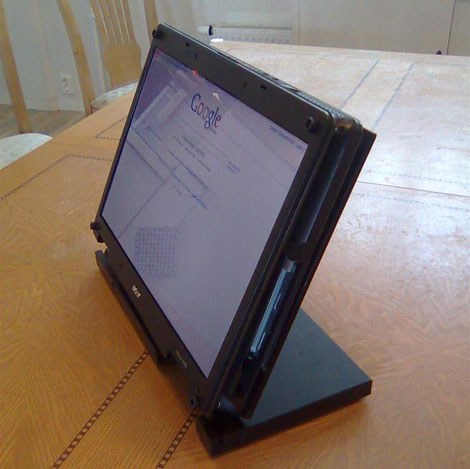
[Jakob] sent in his method of dealing with broken laptop hinges. Broken hinges are a plague. We have no less than 4 laptops lying around that are beyond repair with broken hinges. Some are just propped up against things, some have had box hinges glued to them and some are just waiting to die slowly from non use. [Jakob] has a nice neat conversion where he basically made a tablet. We’ve seen that before as well as picture frames. His version, while being quite possibly easier than most of the others, has a neat design aspect. An extended lip at the bottom fits in a groove in a plastic slab. All in one PC becomes a tablet in an instant. Not too shabby for a broken laptop. It looks like he needs to pop a touch screen kit on it though.















